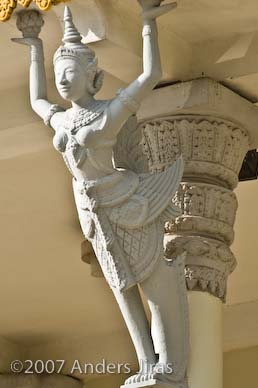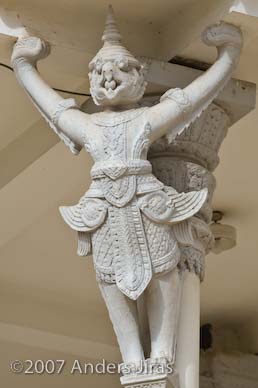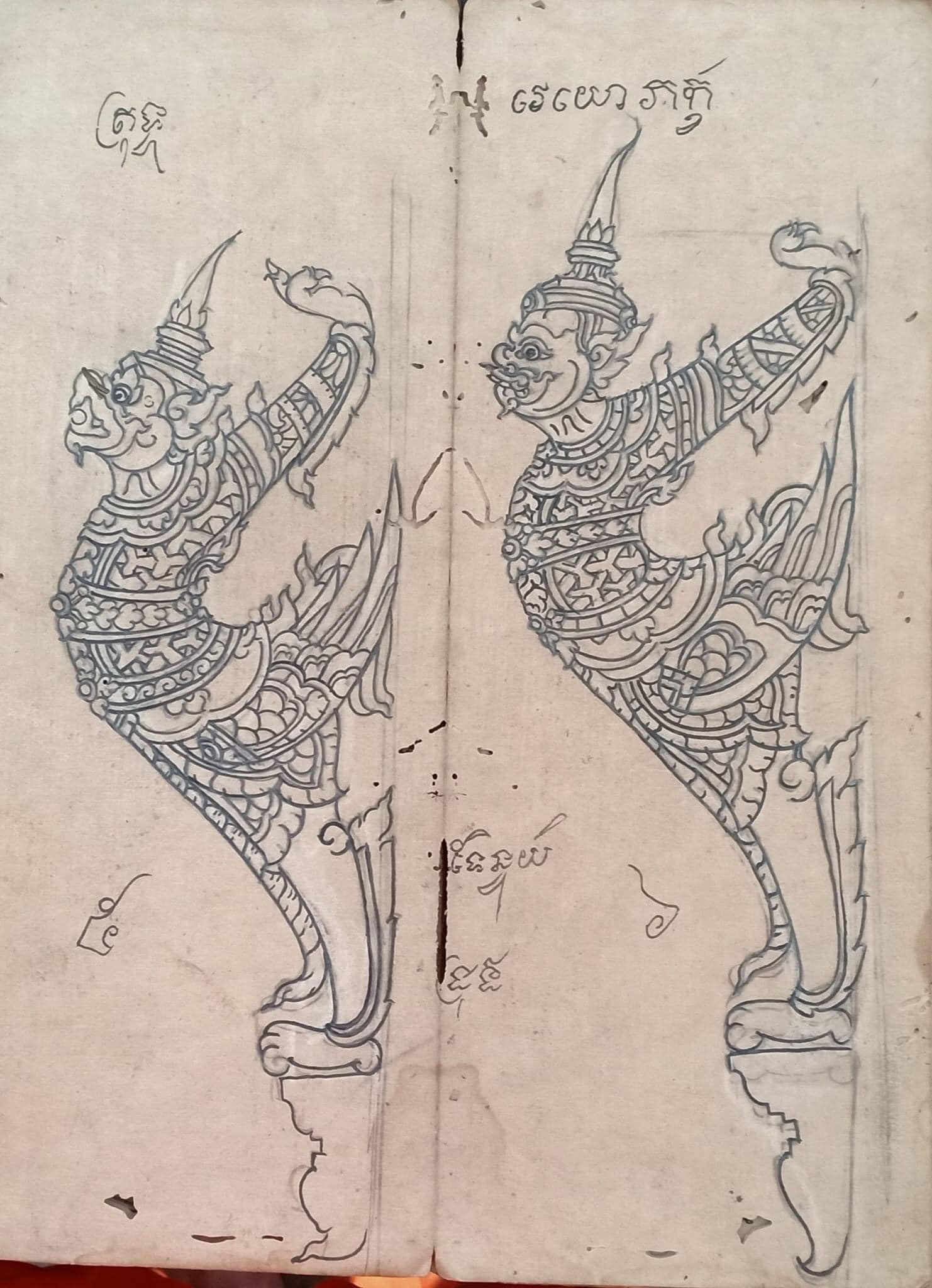

The original production of "Preah Anurudh Preah Neang Ossa" was choreographed by Ms. Pen Sok Huon, Director o the Dance School of the Secondary School of Fine Arts with support from the Asian Cultural/Rockefeller Mentorship Program in collaboration with Amrita Performing Arts. This weekend series of performances is sponsored by ANZ Royal Bank.
Synopsis
In the kingdom of Demons, King Krong Pean has a son Tousamuk (a giant like his father) and a beautiful daughter Preah Neang Ossa. In the kingdom of Norangka, Preah Anurudh leads his soldiers into the forest where he sees some angels playing in a pond. The prince and his soldiers approach the angels who are frightened and run away. The prince's soldiers chase the angels but the price, separated from others, looses his way. Exhausted, he falls asleep under a tree.
The spiritual protector of the tree predicts that Preah Anurudh is fated to be Preah Neang Ossa's lover, and delivers the prince to Preah Neang Ossa's room. The soldiers cannot find their prince, and inform Preah Chakrith, the grandfather of Preah Anurudh. Preah Chakrith is worried that Preah Anurudh is in trouble and orders the Garuda (a winged creature) to fly him to the Kingdom of Demons.
Preah Anurudh and Preah Neang Ossa are in love and have slept together. Tousamuk comes to Preah Neang Ossa's room to find them together and is furious. He tells his father who orders his giant soldiers to capture Preah Anurudh and tie him to the tower of his temple. Preah Chakrith arrives and finds Preah Neang Ossa crying bitterly and proceeds to recount what has transpired. Preah Chakrith casts a magic spell to release Preah Anurudh from the tower and dispatches the couple back to their kingdom.
Pen Sok Huon, Classical dance master:
... I choreographed the classical dance drama Preah Anurudh Preah Neang Ossa and revived the role of Kei Nor. This role, that had been lost, is different from other roles as it depicts a character that is half human and half bird. We recreated the costumes and revived the dancing movements. It was a tough job and we could not have done it if we had not seen it. Today, we can see Kei Nor in many of the temple bas-reliefs. I wanted to raise audience awareness that, apart from the four major roles – male, female, monkey and giant – classical dance also had the Kei Nor role. ...
See: "Beyond the Apsara", page 176.
Celebrating Dance in Cambodia
Edited by Stephanie Burridge, Fred Frumberg
ISBN: 978-0-415-56445-8, hardback, Routledge India, 2009, 242 pages:
http://www.routledge.com/books/Beyond-the-Apsara-isbn9780415564458
In this dance drama there is also Krut, the Garuda.
See: "The Reamker, painted by Chet Chan", Page 92. Phnom Penh: Reyum Publishing. 8.8 x 10.8", 153 pp., over 100 color illustrations, hardcover, Phnom Penh, 2002.
 |
 |
|
| DSC3937 Kinnara (Kei Nor) at the Throne Hall of the Royal Palace in Phnom Penh | DSC3939 Krut or Garuda at the Throne Hall of the Royal Palace in Phnom Penh |
